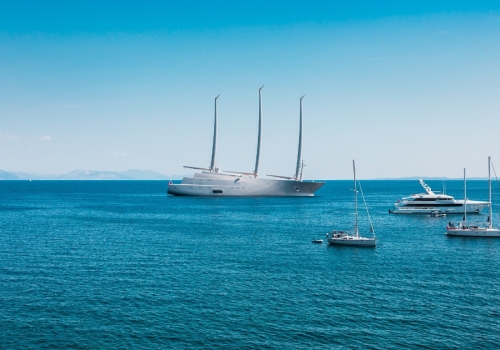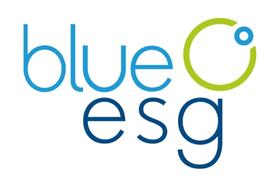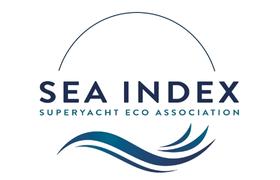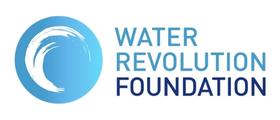Meet the Organisations Fighting to Make Yachting Greener

Sustainability in yachting is an issue that can no longer be ignored; who cares, wins.
That’s the message from Blue ESG founder, Captain Nigel Marrison.
During a long career at sea, with much of it spent captaining luxury yachts, Captain Marrison became increasingly disillusioned with an industry that seemed to have turned a blind eye to the environmental catastrophe unfolding around it. He decided something had to be done, and his answer is Blue ESG.
Blue ESG’s mission is to rapidly usher yachting into a new era of decreased environmental impact and increased societal responsibility. Blue ESG provides a framework for yacht operational governance which not only reduces its carbon footprint, but also identifies and measures the value it offers crew, communities and cruising destinations. “We want to help yachting to have a meaningful impact and create positive value for all stakeholders, including people, the planet and the economy,” said Captain Marrison.
Blue ESG finds itself in good company, with peers that include the Water Revolution Foundation and SEA Index. We spoke to Captain Marrison as well as representatives from both other organisations, to find out how they are taking the yachting industry into a new era of sustainability, and environmental responsibility, and why their mission matters.
But before we can dive into the detail, first we need to answer a core question:
What is ESG?
ESG is short for Environmental, Social and Governance. According to McKinsey, ESG is a means by which to measure a company’s environmental and social impact on the world.
Environmental criteria measure the company’s ecological footprint or impact, social criteria measure the company’s relationships with its own people and the communities around it, and governance accounts for the company’s self-management. That includes aspects such as executive pay, decision-making, and regulatory compliance. In sum, the purpose of ESG is to generate value for all organisational stakeholders - such as employees, customers and financiers or suppliers.
Why ESG?
In the context of an ever increasing climate crisis, consumers worldwide have begun pressurising companies to certify that the goods and services that they deliver have been responsibly produced, taking into account environmental impacts and the way these companies treat their own staff, the communities around them, and their supply chains.
ESG subsequently emerged as the standard by which companies could certify their operations, giving their stakeholders - including consumers and their communities - the peace of mind that the company is not only a good neighbour but was also worthy of the consumer’s spend.
Consequently, ESG reporting has seen huge global investments as companies race to obtain ESG reporting tools.
Yachting and ESG
The yachting industry is not immune from that trend, because while the industry is often accused of shirking environmental concerns, the tide is now turning. Environmental responsibility is fast becoming a critical consideration; a commercial imperative. Non negotiable.
Three key players represent the force driving change: Blue ESG, the Water Revolution Foundation, and SEA Index.
 Blue ESG
Blue ESG
Blue ESG was founded by Captain Nigel Marrison, taking a 360° holistic approach to ESG reporting which benefits individual vessels as well as the industry as a whole. “We offer asset and reputation risk management for superyacht owners. Taking inspiration from corporate ESG frameworks, we capture and analyse a cross-section of operational data to enable operators and management teams to make fact-based decisions to improve ESG performance.
“In turn, this drives overall performance, efficiency and safer operations. By delivering value for people, the planet and the economy, ESG reporting also improves the market’s perception of a brand and its reputation.”
Blue ESG’s methodology aligns with internationally recognised frameworks and adopts IMO emissions regulations for merchant ships into a strategy applicable to yachts. This includes IMO’s requirement for a Ship Energy Efficiency Management Plan (known as SEEMP Part III) and rules for the ship’s Carbon Intensity Indicator (CII) targets.
Consequently, Blue ESG ensures that yachts now have a unique and effective roadmap for decarbonisation. “Blue ESG provides an opportunity for a yacht to decarbonise its operations according to robust IMO standards and expectations, up to Net Zero 2050. Thanks to this initiative, yachts are now able to work towards a tangible goal, and Blue ESG’s focus on the yacht’s operational side will ensure that we are in a position to achieve that.”
Captain Marrison also stressed that a strong ESG report will secure a yacht’s future support from financial and insurance institutions. “It will ensure that a yacht avoids stranded asset status when adopting the IMO’s Yacht CO2 emissions strategy.”
Blue ESG is working with data analysts and the decarbonisation team at Lloyd’s Register to ensure superyachts have a robust and credible strategy and roadmap to Net Zero 2050.
SEA Index
First launched in September 2020 by Yacht Club de Monaco and Credit Suisse, SEA Index consists of two things.
Firstly, it is a peer-to-peer CO2 emissions comparison tool for superyacht owners, their captains and industry stakeholder, delivering a snapshot of the energy usage of a yacht to allow comparison with averages across a fleet and better-informed decisions about energy usage.
SEA Index’s data collection method was developed in agreement with Lloyd’s Register and is based on manufacturer specifications for the yacht’s gross tonnage, its propulsion, and its generators. For a fee, the data presented by the SEA Index tool can be certified through Lloyd’s Register and an optional full energy-balance examination can also be provided.
According to SEA Index representative Natalie Quévert, the tool is designed to be simple but effective. “We wanted to create something that is simple to use, robust, data-based, unbiased and - very importantly - in line with IMO measurements so that it can adapt easily to regulatory changes if and when they arise.”
SEA Index is also a non-profit association with a broader mission. The Superyacht Eco Association (SEA) brings like-minded and sustainability-oriented people together. “All members aim towards more energy-efficiency and better practices in yachting thus forming the basis of the SEA Index community,” Quévert explains.
To encourage membership of the Superyacht Eco Association, yachts receiving a minimum of 3 SEA Index stars are encouraged to join and become SEA Index ambassadors. There is also an incentive-based reward system in the Yacht Club de Monaco Marina whereby Superyacht Eco Association private yachts who achieve a 3-star rating receive a 5% discount and 4-star ratings receive a 10% discount.
Collaboration is also a key aim. “We have always been open to true collaboration as we believe this is the way the industry can take the lead before policy comes into play,” says Quévert. “We recently identified some interesting initiatives that are complimentary to the SEA Index as they relate to the operational side of the yacht. Blue ESG is one of these initiatives and we applaud Nigel Marrison for taking on this complex task.”
Water Revolution Foundation
Established in late 2018, the Water Revolution Foundation (WRF) was started from within the superyacht industry in an effort to neutralise the industry’s ecological footprint and preserve the world’s oceans. According to WRF Executive Director Robert van Tol, “The foundation is a platform set up to collaborate with like-minded companies and individuals to develop the knowledge, tools and best practices needed to accelerate sustainable change in the sector.”
Van Tol has been active in the yachting sector for 15 years, initially working with the Superyacht Builders Association (SYBAss) shortly after its founding. When SYBAss set up a sustainability committee, he identified a shortcoming in that membership was limited to members of SYBAss. He subsequently left SYBAss and established WRF as a collaborative platform that would be open to the whole industry.
WRF is the superyacht industry’s first independent, international science driven NPO, specifically founded to tackle the sector’s environmental impact and guide it towards a sustainable future. WRF utilises the ISO standardised Life Cycle Assessment methodology (LCA), which takes all phases of a yacht’s life cycle into account, identifying areas in which there is potential to improve efficiencies in order to reduce consumption and environmental impact.
Commenting on the WRF’s plans for the future van Tol said: “Our sector tends to be focused on reducing harmful environmental impacts, but we are also hoping to see increased interest in ocean conservation among yacht owners in future. The WRF is actively supporting effective projects that will help clean up yachting while taking care of the oceans.”
Protecting the future of the superyacht industry
Blue ESG joins an illustrious group of peers with the shared goal of helping to decarbonise superyachts, reduce their environmental impact, improve their relationships with local communities and, ultimately, protect the planet.
Concluding, Captain Marrison said: “The reputation of the superyacht industry is under growing scrutiny by the market, the mainstream media and society at large. The industry needs to hold its hand up and not only accept that there’s a problem, but also take ownership and commit to a solution. Together with industry peers, Blue ESG is working hard to provide that solution.”

Post your comment
You cannot post comments until you have logged in.
Login to post a commentComments
No one has commented on this page yet.
RSS feed for comments on this page | RSS feed for all comments